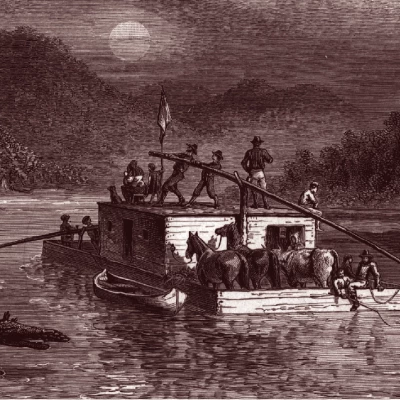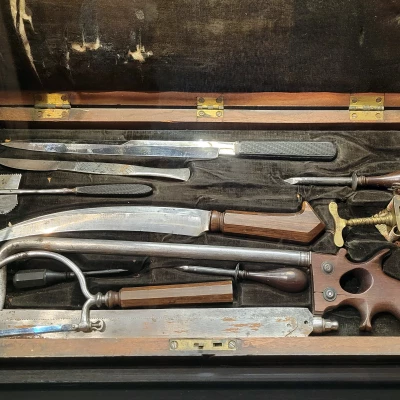Before the Railroad
Before the Railroad
Before the arrival of the railroad, McLean County residents used credit and a bartering system, and trade depended on the Illinois River port in Pekin for both selling and acquiring goods and supplies. Area merchants (mostly grocery, dry goods, lumber, and implement dealers) needed cash for purchasing their goods, but often had to barter and trade goods or services with their customers who typically had little to no money.

Pioneering Merchants
Before the arrival of the railroad, McLean County residents used credit and a bartering system, and trade depended on the Illinois River port in Pekin for both selling and acquiring goods and supplies. Area merchants (mostly grocery, dry goods, lumber, and implement dealers) needed cash for purchasing their goods, but often had to barter and trade goods or services with their customers who typically had little to no money.Featuring:Amasa J. "AJ" Merriman, (1818 – 1894), dry goods store owner

Craftsmen
Blacksmiths, tinsmiths, and brick-makers possessed skills helpful for survival when Euro-American began to settle this area. If the materials they needed to practice their crafts were not available locally, it was expensive but necessary to transport them by boat to Pekin, and then by wagon to Blooming Grove.Featuring:William Richard Goodheart, (1770 – 1842), brickmakerLewis Bunn, (1806 – 1886), BlacksmithGeorge Dietrich, (1816 – 1900), Tinsmith

Practicing Medicine
Frontier healthcare providers were stretched thin and had few resources for healing patients.Frontier:Dr. Wanton H. Parker, (1802 – 1849), doctor
 Making a Home
Making a Home
 A Community in Conflict
A Community in Conflict
 Working for a Living
Working for a Living
 Farming in the Great Corn Belt
Farming in the Great Corn Belt
 Abraham Lincoln in McLean County
Abraham Lincoln in McLean County